Amazing Christmas Facts That Will Change The Way You See The Holiday
For many of those who celebrate the Christmas season, it is the happiest time of the year. Families and friends get together to celebrate the holiday by putting up decorations, exchanging gifts, sharing meals, and enjoying each other's company. Although Christmas means holiday movie marathons, Christmas music, eggnog, and other family traditions to lots of people, there are some facts about Christmas that aren't as well known. Let's take a look beyond the colored lights and presents under the tree to learn some lesser-known facts about Christmas that might change the way you see this cherished annual holiday.
December 25 Was Originally Celebrated By Pagan Religions

Although Christmas supposedly marks the birth of Jesus Christ on December 25, there isn't actually any mention of the date in the Bible. Historians even suspect that Jesus was most likely born in the spring. It is assumed that December 25 was chosen because it coincided with the ancient pagan festival of Saturnalia.
This festival celebrated the agricultural god Saturn with partying, gambling, and gift-giving. Many current Christmas traditions can be traced back to Saturnalia, such as using evergreen trees as decoration, gift-giving, and celebrating with friends and family.
Establishing What Santa Claus Looked Like
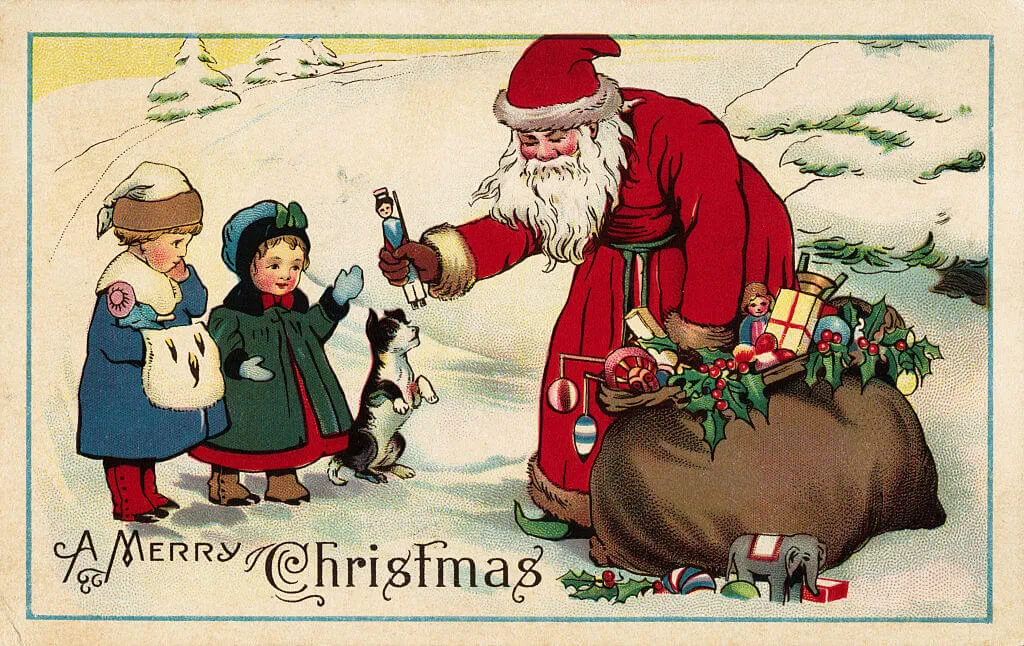
The look of the modern-day Santa Claus was created in an 1804 meeting of the New York Historical Society. Here, a philanthropist named John Pintard handed out wooden cutouts of the jolly St. Nick that we know of today, next to a large bag filled with toys.
In 1819, the image of Santa Claus flying in his sleigh was created by Washington Irving. Strangely enough, Irving was also the author who created the concept of the Headless Horseman for his short story "The Legend of Sleepy Hollow."
The Origin Of Rudolph

In 1939, Rudolph the Red-Nosed Reindeer first appeared in a booklet written by Robert L. May and was then published by Montgomery Ward, the department store. It was created as a trick to encourage children to buy the department store's Christmas coloring books. However, the original Rudolph didn't have a red nose.
Wonder why? Back then, a red nose was seen as an indicator of chronic alcoholism. Montgomery Ward didn't want their reindeer to come off as a drunkard so they originally left it out. Rudolph was also almost named Reginald or Rollo.
Leaving Cookies Out For Santa

The tradition of leaving cookies or other treats out for Santa Claus can be traced back to an ancient Norse tradition. Children who would leave hay and treats for the god Odin's eight-legged horse Sleipnir, hoping they would stop by during their hunting adventures.
Dutch children continued this tradition, leaving food in their wooden shoes outside for St. Nicholas' horse. They then began leaving out food and drinks for St. Nicholas himself to honor him on his feast day. Today, people typically leave out cookies and milk for Santa Claus, continuing this centuries-old tradition.
The Three Colors Of Christmas
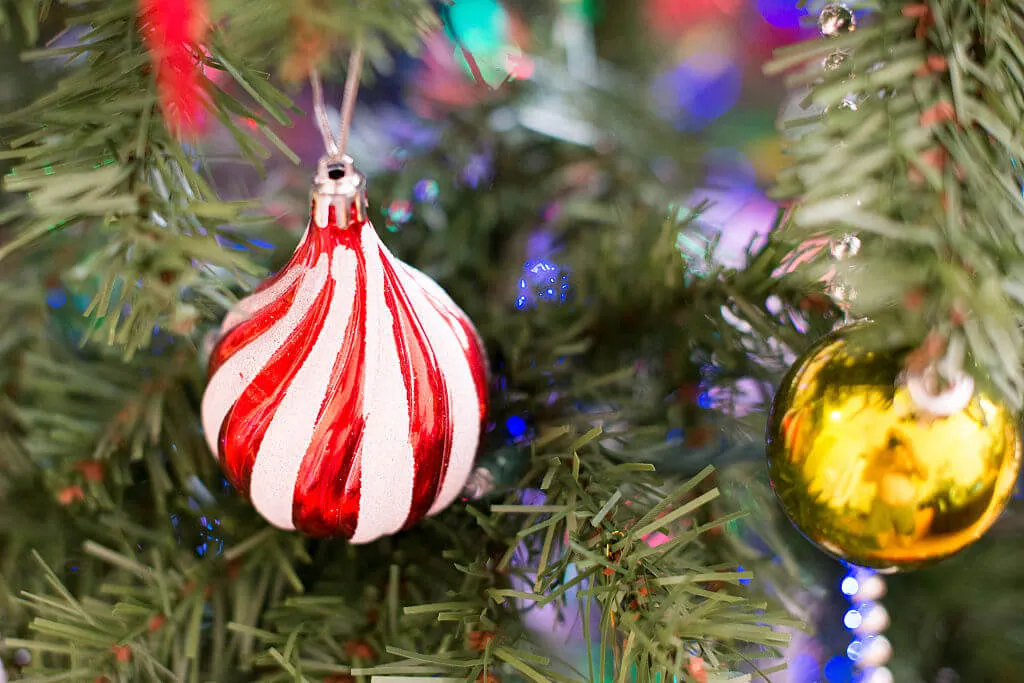
It's no secret that the three prominent colors of Christmas are red, green, and gold. At the start of the Christmas season and throughout the holidays, these colors can be seen all over. The color combo is one of the primary indications of the Christmas season.
However, these three colors were not chosen at random and actually have a significance that not everybody is aware of. Red symbolizes the blood of Christ, green symbolizes life and rebirth, and gold represents light, royalty, and wealth.
NORAD Santa Tracker Was A Mistake

Believe it or not, the NORAD (North American Aerospace Defense Command) "Santa Tracker" was the result of a misprint in the newspaper. In 1955, a Sears advertisement was supposed to print the number of a store when children could call and tell Santa Claus what they wanted for Christmas. The number that was printed was the hotline of the Directors of Operations for the United States Continental Air Defense.
Colonel Shoup, Crew Commander, saw this as an opportunity to do something for the children and ordered his staff to give children updates on the flight coordinates to Santa. The tradition continues today in which NORAD provides updates on local news, the Internet, and phone applications.
Coca-Cola Helped Invent The Modern Image Of Santa Claus
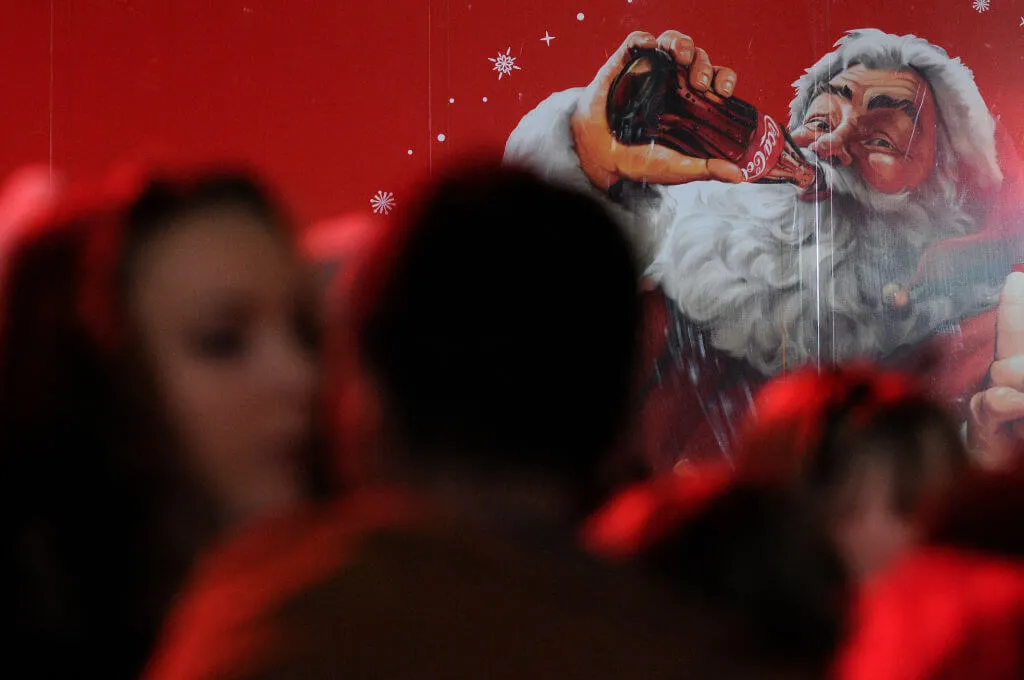
Prior to the 1930s, Santa Claus was not always depicted as the big jolly man in red with a white beard. In fact, he was often represented as a gaunt man who was even described as looking like a "spooky elf." However, in 1931, Coca-Cola wanted to run a campaigned that showed a realistic and wholesome Santa.
Illustrator Haddon Sundblom turned to "'Twas the Night Before Christmas" for inspiration. Thus, the common depiction of Santa Claus that we see today was introduced and used in Coca-Cola's advertising for that year and the years to follow.
Prince Albert Helped Popularize Christmas Trees

Apparently, the origin of Christmas trees can be traced back to ancient Egyptians and Romans, who marked the winter solstice with evergreens as a reminder of the upcoming spring. However, it wasn't until Prince Albert of Germany brought a tree home to his wife, Queen Victoria of England, that buying and decorating Christmas trees became a tradition.
A drawing of the couple and their family was published in the Illustrated London News in 1848, which led to the popularity of people putting Christmas trees in their homes to grow immensely.
Christmas Stockings Come From A Dutch Legend

The origin of the Christmas stocking comes from a Dutch legend during the life of St. Nicholas. There was a poor man with three daughters who had no money for them to get married. St. Nicholas heard the old man's problems and wanted to help although he knew the man wouldn't accept charity.
St. Nicholas then threw a bag of gold into the house through the chimney and it landed in a stocking hanging by the fire to dry. All three of the man's daughters were then able to marry. Although the story varies, it led to the custom of children hanging stocking or putting out their shoes, awaiting gifts from St. Nicholas.
"Jingle Bells" Started As A Thanksgiving Song

Originally titled "One Horse Open Sleigh," "Jingle Bells" was first written and published by James Lord Pierpont. It was then performed at his church's Thanksgiving concert. Then, in 1857, the song was then republished under the title that it's known by today. It grew to become one of the most popular and recognizable Christmas songs of all time.
Interestingly, the holiday jingle was the first song to be broadcast from space. On December 16, 1965, the Gemini 6 crew serenaded Mission Control after they reported seeing a "red-suited" astronaut.
Celebrating Christmas Was Illegal In The Early United States

Even though the original Jamestown settlers created the first American batch of eggnog, that doesn't mean that they celebrated Christmas. By the time that the Puritans had begun to settle in Boston, Christmas had been outlawed. From 1659 to 1681, those caught celebrating Christmas would be fined for celebrating the once-pagan holiday.
Even after the Revolutionary War, Christmas was considered to be so unimportant that Congress held their first session on December 25, 1789. Christmas wouldn't become a federal holiday for almost another century.
Christmas Decorating Sends Nearly 15,000 People To The ER Annually

Preparing for the holidays has proven to be a rather hazardous task. Whether it's climbing onto the roof to hang Christmas lights or cooking a roast in the oven, thousands of people find themselves at the emergency room during the holiday seasons.
According to the Consumer Product Safety Commission, roughly 14,700 people visit the emergency room during the months of November and December due to holiday-related decorating accidents. In addition, dried-out Christmas trees have caused hundreds of fires each year and have resulted in $14.7 million in property damage.
Peace During World War I On Christmas

Five months into World War I, on Christmas Eve, the soldiers on the Western front took a break from the fighting in 1914. In the week leading up to Christmas, French, British, and German forces crossed trenches to exchange seasonal greetings and socialize. In some areas, men from both sides went into "no man's land" to exchange food, souvenirs, and to sing carols together.
In some instances, there were joint burial ceremonies and prisoner swaps with some groups even playing games of football together. This because known as the Christmas truce which was eventually banned later in the war.
Traditions Vary Greatly Country To Country

Although the premise of Christmas remains widely the same throughout the world, holiday traditions definitely vary culture to culture. People in Finland visit saunas on Christmas Eve, while the Portuguese hold a feast on Christmas day for both the living and the dead, even setting places at the table for those who are deceased.
In Greece, some believe that goblins known as kallikantzaroi run rampant during the 12 days of Christmas, with most Greeks not exchanging gifts until January 1st. In countries such as Australia and New Zealand, Christmas is celebrated on the beach with barbeques. So, although everyone is celebrating the same holiday, everyone does it in their own unique fashion.
The Legend Of Krampus

In Central European folklore, Krampus is a horned anthropomorphic creature that is described as being "half-goat and half-demon." As the legend goes, during the Christmas season, Krampus is the opposite of St. Nicholas and punishes children who have misbehaved. He usually carries around chains, bags, and cages to cart evil children away.
He is believed to be one of the many companions of St. Nicholas in several countries throughout Europe. Although the origin of Krampus is unclear, folklorists believe that the creature has pre-Christian origins.
The First Christmas Trees Weren't Sold Commercially In The US Until 1901

Although getting a Christmas tree has been a long-lasting tradition for families across the world, in the United States Christmas trees weren't sold commercially until 1901! Before that, they were simply taken at random from forests. However, by the 1900s, the evergreen tree population had been devastated from overharvesting.
In 1901, the first Christmas tree farm was established when W.V. McGalliard planted 25,000 Norway spruce on his farm in New Jersey. President Theodore Roosevelt even lent a hand and planted a Christmas tree farm on his estate in Hyde Park, New York in the 1930s.
Black Friday Didn't Get Its Name From Shopping

The term "Black Friday" originated in Philadelphia, and it wasn't used to describe shopping sales. It was originally used as a reference to the high amount of pedestrian and vehicle traffic on the day after Thanksgiving. The term first began circulation in Philadelphia in 1961 and had spread to other parts of the country by 1975.
Over the years, the term eventually took on a new meaning. As most retailers experience financial loss through the months of January to November, their numbers are in the red. However, Black Friday came to mark the day after Thanksgiving, when businesses could turn a profit and put their numbers in the black.
The Abbreviation "X Mas" Isn't As Secular As People Think

While some people may refer to Christmas as "X Mas" in order to take the Christ out of Christmas, the origin of the abbreviation shows that it's as religious as it gets. X stems from the Greek letter chi which is the first letter in the Greek word Χριστός which is translated to mean Christ in English.
The "mas" at the end of Christmas is part of the Latin-derived Old English word for Mass, which is the religious service attended by Christians. So, using an "X Mas" isn't really taking the Christ out of anything, just shortening its true meaning.
Christmas Lights Used To Be A Sign Of Status
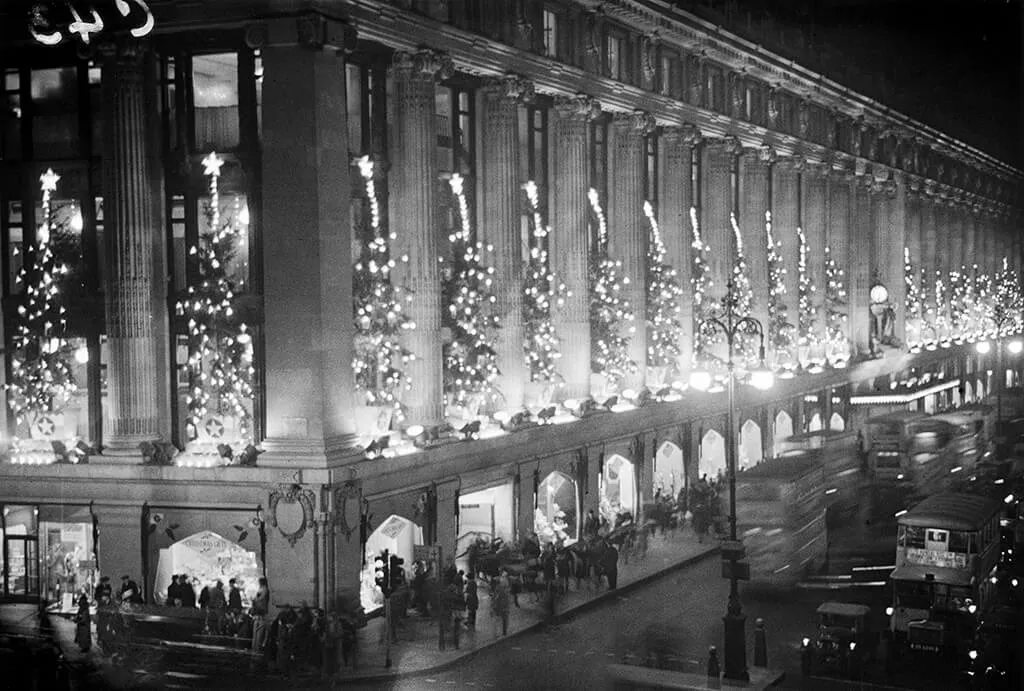
Although many people take having Christmas lights for granted or even dread the laborious task of hanging them up, they didn't use to be so widely available. In fact. a century ago, it was much more common for people to rent their Christmas lights and then return them after Christmas.
Typically, only people with substantial financial means could afford to buy their own lights for the holiday. This also meant that an electrically-lit Christmas tree became a sign of status in the early 1900s.
Turkey Wasn't Always The Main Dish At Christmas Dinner

While most people may not think Christmas is complete without a turkey for dinner, a turkey wasn't always available or affordable. Before turkeys were brought into other countries such as Europe over 500 years ago, people would typically eat geese, boars' head, and even peacocks during the holiday season.
King Henry VIII was one of the first people to enjoy a turkey on Thanksgiving because they weren't cheap. The bird didn't even become common at Christmas dinners until the 1950s, with many people choosing a goose instead. However, the invention of refrigeration and the decreasing of prices led turkey to become a prominent Christmas dish.
Washington Irving Imagined Santa In A Sleigh

It's hard to imagine, but the same man who thought up the ghost story of the Headless Horseman in Sleepy Hallow also created the image of Santa Claus flying in a sleigh. In 1819, the image of the jolly man in his sleigh was thought up by none other than Washington Irving.
In The Sketch Book of Geoffrey Crayon, a series of short stories, Irving describes a dream where Santa is flying through the sky in a weightless sleigh. It's the first account of Santa in a magic sleigh.
The Reindeer Names Are From a Poem

Before the ninth reindeer came into the picture, Santa's sleigh was pulled by eight. The names of these reindeer are originally introduced in Clement Moore's 1823 poem "A Visit from St. Nicholas," commonly called "The Night Before Christmas." In the poem, Moore names off all eight of Santa's trusty companions:
Dasher, Dancer, Prancer, Vixen, Comet, Cupid, Duner, and Blixem (for the German words for thunder and lightning). The last two names later evolved to Donner and Blitzen. Rudolph was later introduced, thanks to 20th-century pop culture!
Leaving Treats For The Reindeer Is A Norse Tradition
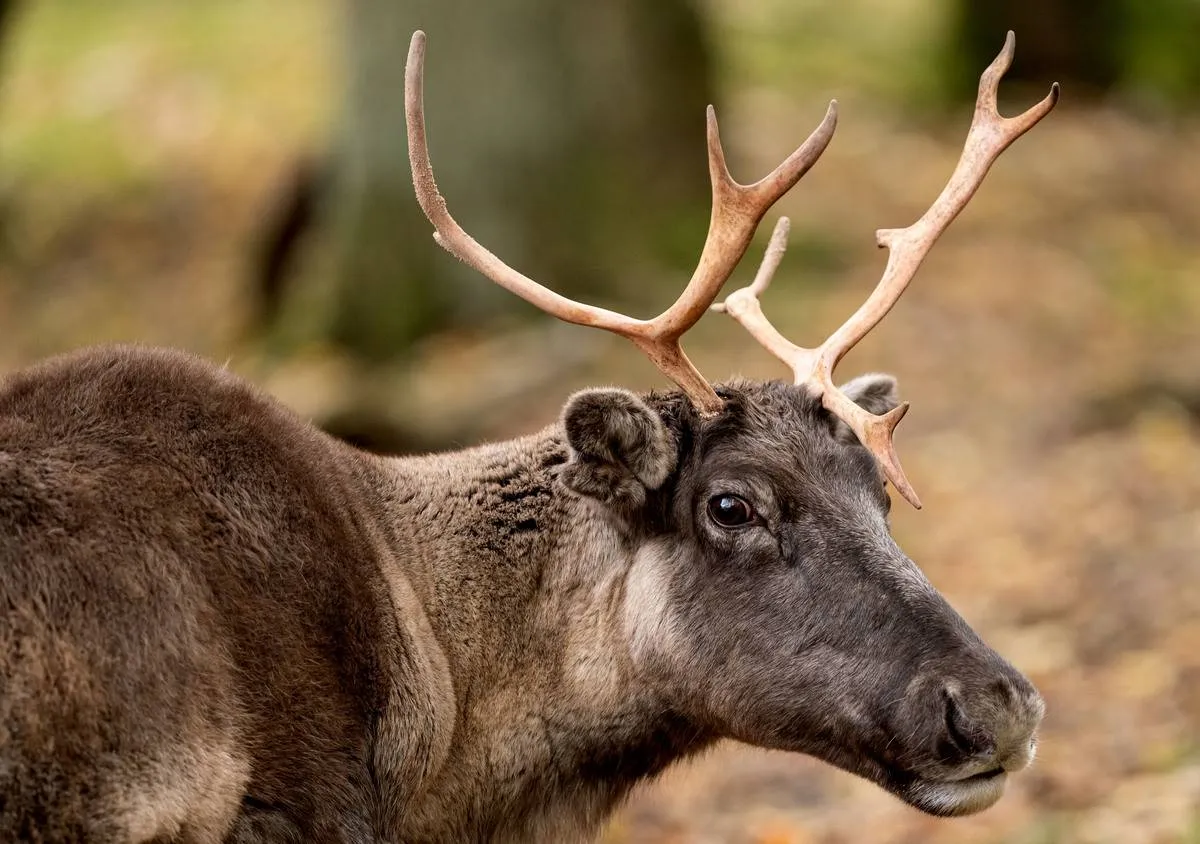
While a lot of children set out milk and cookies for Santa, there are some who adopt an age-old tradition of leaving treats out for the reindeer. Starting back with Norse children leaving carrots, hay, and other treats for the god Odin's eight-legged horse Sleipnir, the tradition was adopted by the Dutch.
For Dutch children, though, leaving reindeer treats on a plate or in a bowl isn't acceptable. Instead, they leave the snacks in their wooden shoes!
The Reindeer Shouldn't Have Antlers

One of the distinctions of Santa's sleigh is the nine huge reindeer pulling it across the sky. Interestingly, the reindeer shouldn't be sporting their huge antlers. Whether male or female, reindeer shed their antlers each year during the winter months.
Caribou, or reindeer, are also the only breed of deer in which a female is able to grow antlers. So, for all pop culture knows, some of Santa's magical reindeer could possibly be female! Also, all of the Christmas decorations depicting reindeer are technically incorrect. Just some food for thought!
Eggnog Dates Back To Jamestown In 1607

A popular holiday drink is eggnog. This creamy delicious drink isn't from the modern age, though. It actually dates back to 1607 and the Jamestown settlement in Virginia. The drink's name comes from the word "grog," which pretty much means anything mixed with rum.
Of course, the settlers were also found of the non-alcoholic version, too, as many people are today. Originally, the drink was made solely with sugar, milk, eggs, brandy, and rum. Today, people throw in assortments of spices. But one aspect stayed consistent; it's best served chilled!
The Christmas Tree In Trafalgar Square Is A Thank You
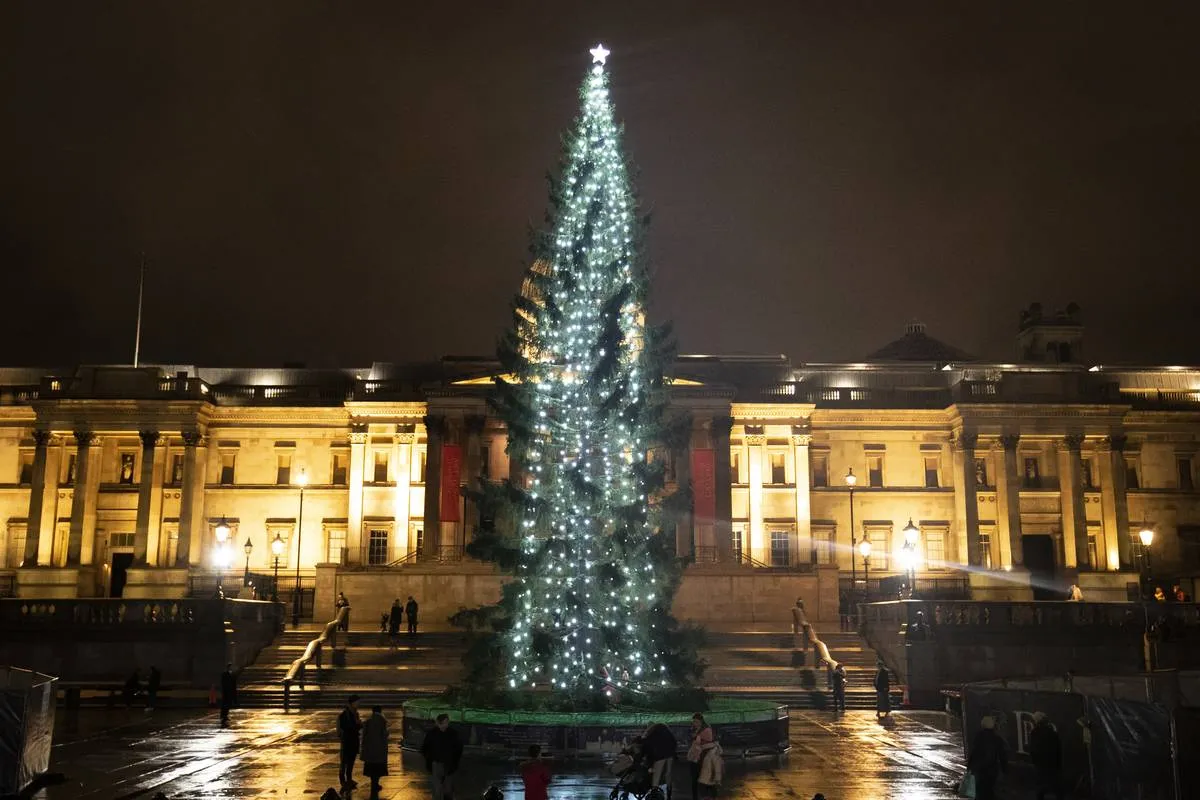
Trafalgar Square is a public square in the city of Westminster, and since 1947, a Christmas tree has stood in the square from the start of December until the sixth of January. The 50-to 60-year-old Norway spruce is a gift to Britain in thanks for their assistance during the troubling times of World War II.
Traditionally, the tree is cut in Norway sometime in November during a ceremony which the Mayor of Oslo, British Ambassador to Norway, and Lord Mayor of Westminster attend before it's shipped off to Britain via boat.
Nova Scotia Gifts Boston A Christmas Tree Each Year

Since 1918, the Canadian province of Nova Scotia has gifted the United States city of Boston a Christmas tree. The gift is in thanks for the support Boston gave the city of Halifax during an explosion and fire disaster in 1917.
After the maritime explosion, Halifax never forgot the immediate help the Boston Red Cross and Massachusetts Public Safety Committee provided to the people of the city. Today, the tree is a symbol of goodwill and is the official Christmas tree of Boston.
The Christmas Wreath Was Originally A Religious Symbol
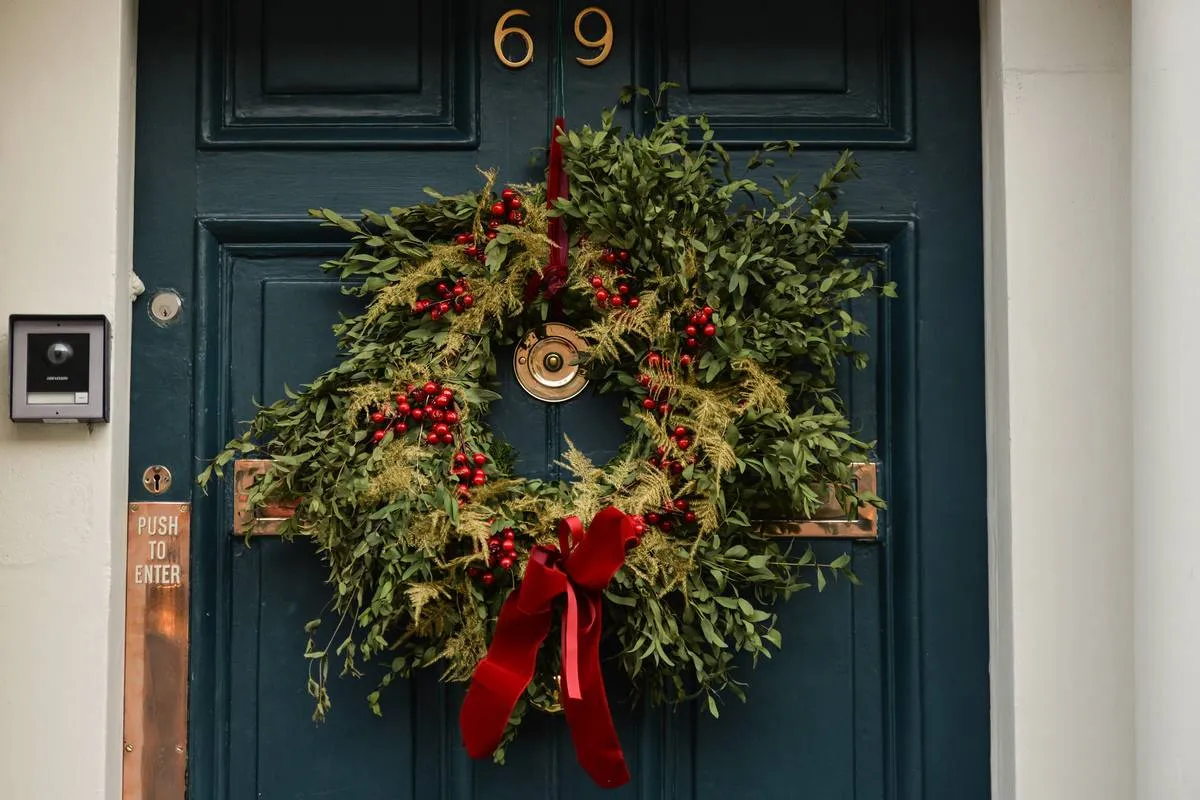
Nowadays, people don't really think twice when they see a Christmas wreath hanging on someone's door. Originally, the wreath wasn't solely seen as a decoration, but as a religious symbol. More distinctly, a symbol for Jesus.
The red berries were seen as the blood he shed while the sharp leaves of the holly, or even twigs, were seen as the crown of thorns Jesus wore on the cross. They were also much smaller than the wreaths seen hanging on homes today.
The Christmas Spider Is Seen As Good Luck
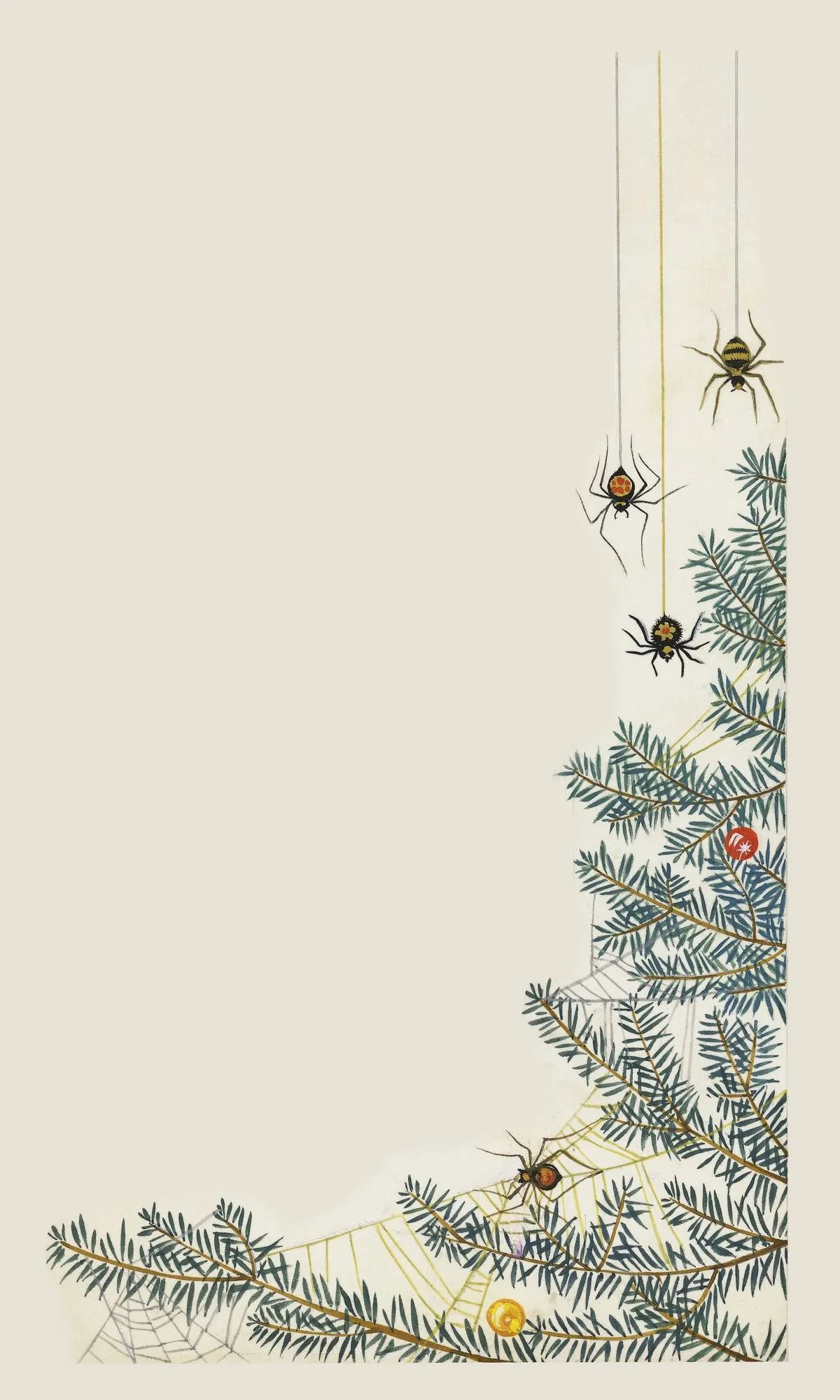
In Poland, there is a Christmas tale that tells the story of a family who was unable to afford decorations for their Christmas tree. But the next morning, their tree was beautiful, with golden and silver strands from a spider's web.
Now, people of Poland consider finding a spider in their Christmas tree good luck. And if a spider isn't found, many families opt to place a spider ornament on their tree in hopes that good fortune will follow.
Hanging Stockings Comes From A Dutch Legend
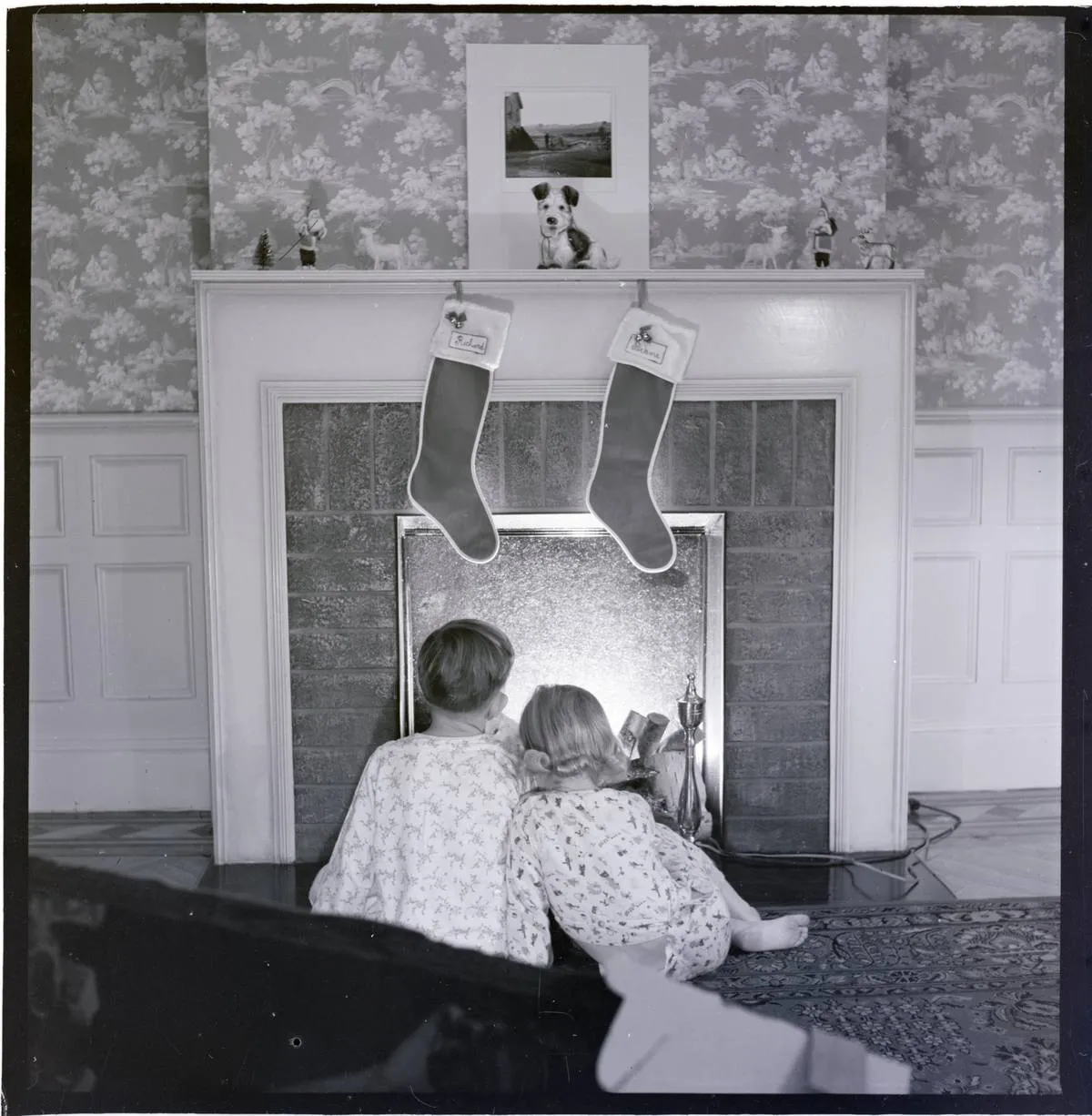
A Christmas tradition for many is hanging up stockings by the fireplace. The tradition is actually based on a Dutch legend. It's said that a poor man with three daughters was unable to provide them with a dowry, meaning it would be nearly impossible to marry them off.
On Christmas Eve, Santa dropped a bag of gold down the chimney and the coins wound up falling into the stockings drying by the fireplace. Now, the girls had money and would be able to wed.
Christmas Caroling Comes From Wassailing

People going door to door singing Christmas carols are all taking part in an old English custom called wassailing. This tradition has people going door-to-door singing songs and offering drinks from the wassail bowl, typically full of mulled punch, in exchange for gifts.
While this tradition still exists, it has been, in a way, overshadowed by modern-day caroling with groups of people in parks, on the sides of the road, in church, or even walking down sidewalks. People aren't too prone to walk up to strangers' homes anymore.
"Rockin' Around The Christmas Tree" Was Recorded By A 13-Year-Old

Despite having an oddly mature voice, Brenda Lee was only 13 years old when she recorded the 1958 Christmas classic "Rockin' Around the Christmas Tree." Ironically, Lee had no clue why the writer of the song, Johnny Marks, wanted her to sing the song.
During an interview, Lee said, "I was only 12 [sic], and I had not had a lot of success in records, but for some reason, he heard me and wanted me to do it. And I did." As of the songs 50th anniversary in 2008, Lee's original version has sold more than 25 million copies
"The Messiah" Was First Performed In Dublin, Ireland, In 1742

In 1741, George Frideric Handel composed what is considered one of the most well-known and frequently performed works, "The Messiah." Only one year later, the orchestra, solos, and choir-mixed composition was first performed in Dublin, Ireland. Ironically, it wasn't performed during Christmas or even a winter month.
The first performance of "The Messiah" was done on April 13, 1742. Interestingly, the oratorio was originally met with a modest response before it gained popularity. Now, it is one of the most well-known choral works in Western music.
Artificial Trees Date Back To The 1800s

It might seem like a modern aspect of Christmas, but artificial holiday trees actually date back as far as the 1800s. Then, the fake trees were made of dyed goose feathers or green raffia (think an artificial grass hula skirt).
After some time, the Addis Brush Company stepped in and used their machinery that made toilet brushes to create more realistic pine-like trees. Thankfully, these trees were less flammable, and they had the added bonus of being able to hold up heavier ornaments and decorations!
Christkindlesmarkt Is Europe's Oldest Christmas Market
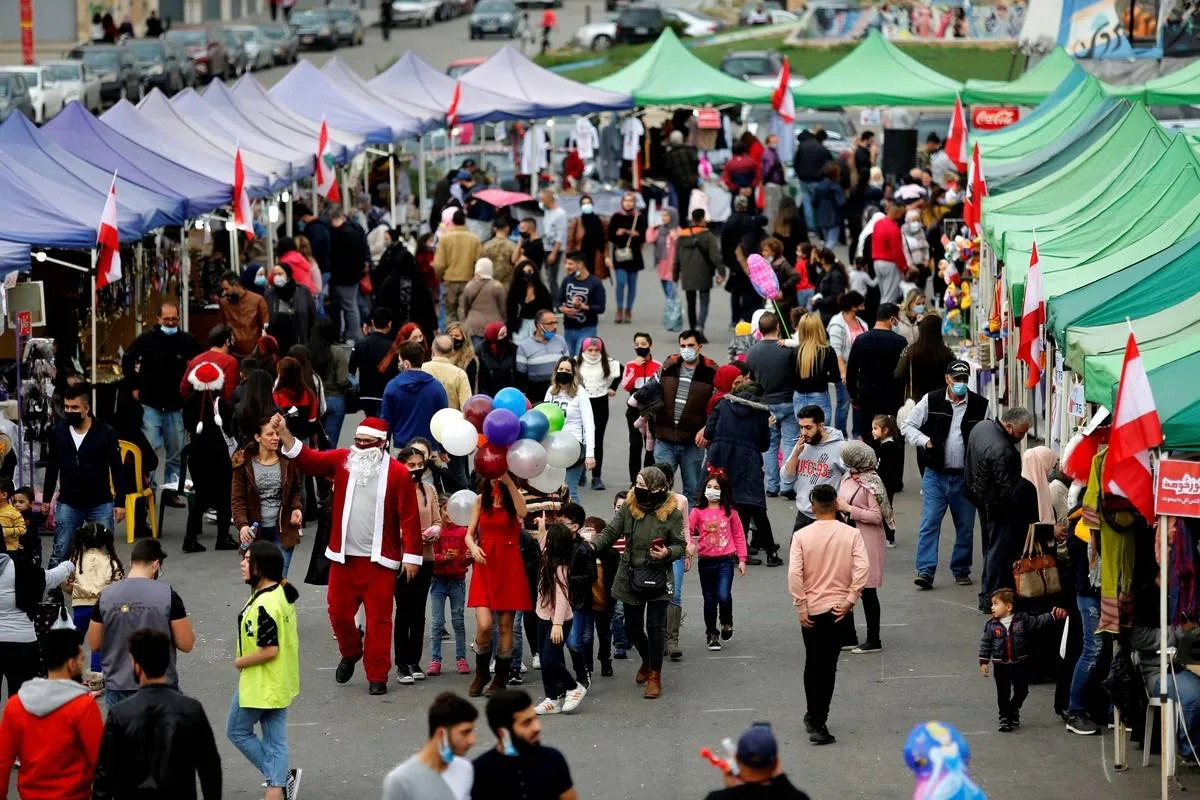
First established in 1570, the Christkindlesmarkt Christmas Market is held during the four weeks of Advent in Nuremberg, Germany. The market is one of Europe's oldest and largest Christmas markets, catering to people from all over the world during the holiday season.
Traditionally, the market is held in Hauptmarkt, the town square in old town Nuremberg, and has vendors selling various holiday items, food, and drinks. There are also many activities, such as festive singing and dancing. Around two million people frequent the market each season.
"Jingle Bells" Was Originally A Thanksgiving Song

In the fall of 1857, James Lord Pierpont wrote what would become one of the most commonly-sung American songs in the world, "One Horse Open Sleigh," or its more common name, "Jingle Bells." Ironically, the song was written without one speck of the Christmas season in mind.
Even though the song is about gliding through the snow in what may or may not be perceived as Santa's sleigh, the song was originally meant to be a Thanksgiving song! It wasn't until decades after Johnny Pell performed the song that it turned into a Christmas classic.
The Statue Of Liberty Was Gifted On Christmas Day 1886

The Statue of Liberty on New York and New Jersey's Liberty and Ellis Islands is a famous symbol of freedom. Sculpted by Frédéric Auguste Bartholdi, the statue was a gift from the French in 1886 in celebration of American independence.
It's not necessarily the year that's important as much as the day the gift was given, Christmas. Weighing a whopping 225 tons, Lady Liberty is said to be one of, if not the, largest Christmas gifts in the world.
Christmas Trees Are Grown In All 50 States

While a lot of flowers, trees, and other plants are native to specific states, Christmas trees have no such distinction, In fact, the pine trees people use as their Christmas or Yule trees can be found in each of the 50 states.
It's crazy to think that hot and humid states such as Florida and Louisiana, or even the islands of Hawaii, growing pine trees! But they do, all in the name of the holiday season.
Christmas Tree Decorating Originated In Germany
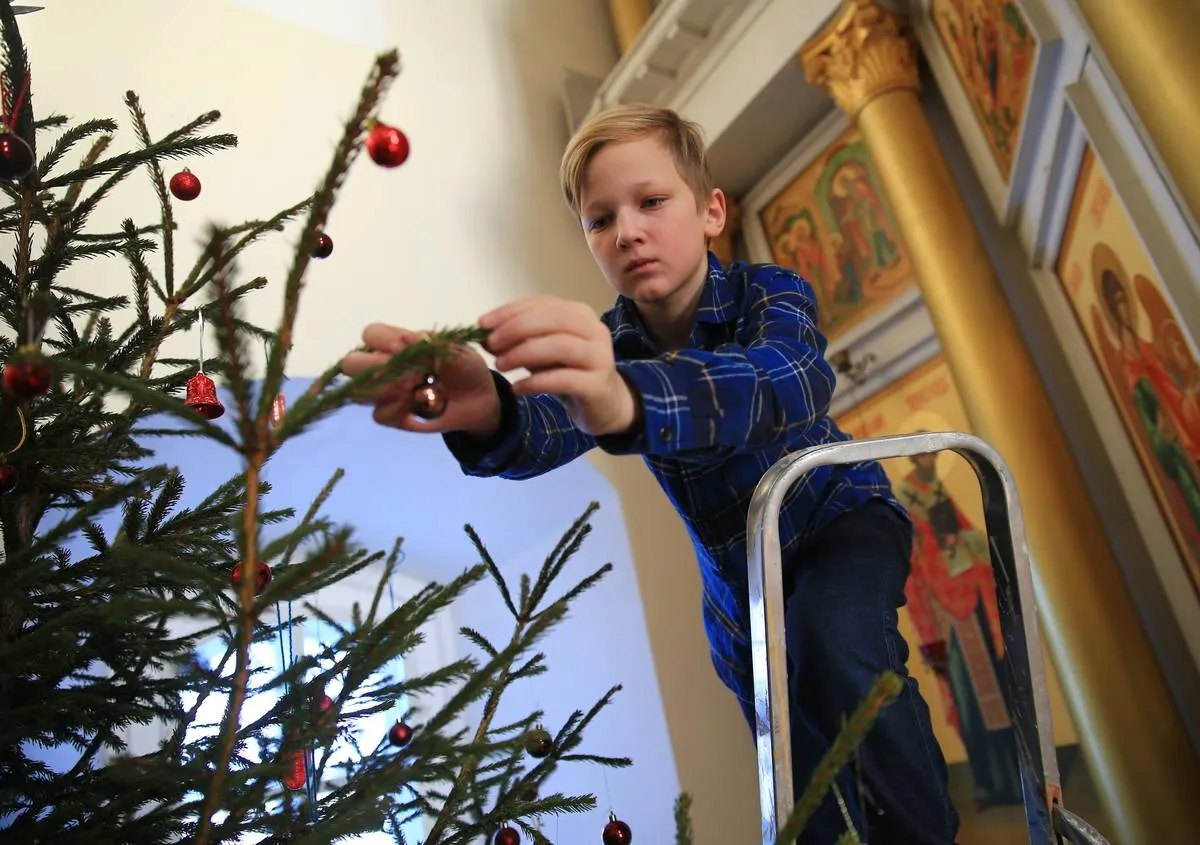
Germany is credited with being the first place to bring decorated evergreen Christmas trees into their homes. In the 16th century, Christians would go out and cut down a tree, decorate it, and bring it into their home during the holiday season.
It's also widely believed that the 16th-century Protestant reformer Martin Luther was the first to put a lit candle as decoration on a tree, grabbing inspiration from the stars he could see twinkling in the night sky between the branches of evergreens.
X-Mas Has A Specific Meaning
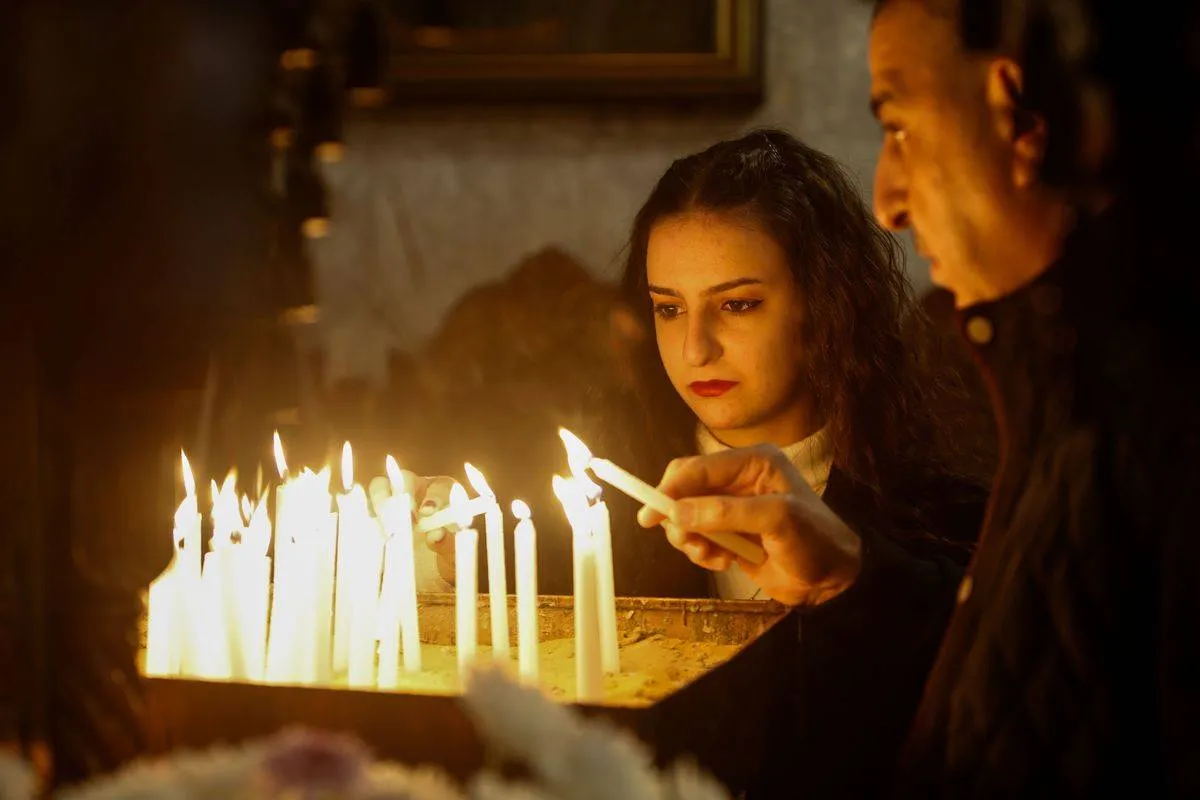
One of the common ways to write out Christmas is to shorten it to X-Mas. Interestingly, the "X" in that abbreviation is actually very important and means something. The "X' comes from the Greek letter Chi, the prefix for the word Christós, a word that means christ in English.
To complete the shortened word, the suffix "Mas" is an old English word for mass. So, if both definitions of the prefix and suffix are put together, X-mas actually means Christ's Mass!









